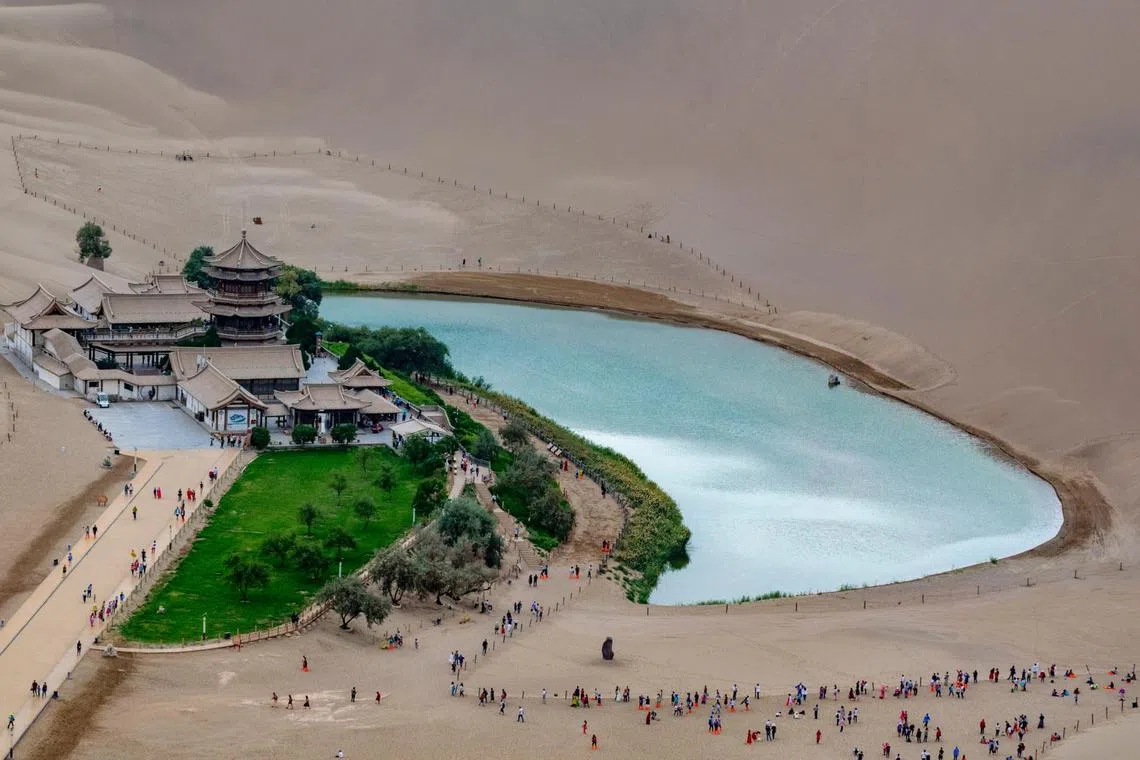China’s ancient Silk Road artwork and statues at risk from climate change
Sign up now: Get ST's newsletters delivered to your inbox

Dunhuang was a desert oasis and frequent pit stop for traders travelling on the Silk Road route between China and Central Asia.
PHOTO ILLUSTRATION: UNSPLASH
Follow topic:
BEIJING – Artwork and statues in China’s Dunhuang caves have survived sandstorms, political upheaval and tourists for more than a millennium. Now preservationists fear they are facing their most unrelenting foe yet – climate change.
Extreme weather is bringing increased bouts of heavy rainfall
“Increased bouts of rainfall in the desert pose an acute risk,” said Dr Li Zhao, a Greenpeace researcher. “Spikes in humidity, flash floods, and cave-ins are already happening.”
For Dr Li, the most alarming thing is that the damage is happening despite the Unesco-listed caves being among the best-funded and closely monitored heritage sites in China. There are likely thousands of other less-well-known sites facing similar risks, and work is needed to identify and protect them, she said.
Researchers from France to Namibia to Indonesia to Australia have found evidence that climate change is accelerating the degradation of some ancient caves and rock art in those countries. Floods can erode artwork, salt crystallisation can cause flaking and peeling, and a combination of moisture and heat can even cause rocks on which art is painted to explode.
Dunhuang was a desert oasis and frequent pit stop for traders travelling on the Silk Road route between China and Central Asia. The first cave was carved into the cliffs there around 366 AD, according to Unesco, and over the next 1,000 years, the caves became one of the world’s richest repositories of Buddhist art, featuring an amalgamation of styles from China, India, Turkey and various ethnic minorities.
Desert conditions helped preserve the paintings and statues for centuries. But Gansu has seen changing weather patterns in recent decades. The province’s average temperature is rising 0.3 deg C every 10 years, faster than the global average. And since 2000, total rainfall in the province has increased while the number of rainy days has fallen, resulting in more bouts of intense downpours. BLOOMBERG

